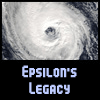| cieldumort |
| (Moderator) |
| Sat Oct 06 2018 06:41 PM |

|
|
|
This topic has been a perennial among weather geeks and the public alike, but has come front and center again with back-to-back years of tropical cyclones producing far more damage, death and destruction than their "Category" would imply.
And it's not just intuition. For many decades, the Saffir-Simpson Scale associated specific threat levels with each incrementally increasing category. For example, storm surge was directly linked to category. But this is FALSE. Minimum central pressure ranges were linked to category, but this is also FALSE.
While these two examples of fallacious attribution have since been removed from the scale's definitions, public confusion remains, and who could blame them? Each and every new storm is designated with either a non-number, call it a big, fat nothing if you like, and then a range of 1 though 5, with only 3 and above being "Major." Why would anyone concern themselves about some storm not deemed by the professionals to be major?
Like many things in life, reality is far more nuanced. What was perhaps good shorthand when tropical meteorology was not nearly as advanced, and the public communication science was in its infancy, may actually be doing more harm than good now in too many situations.
Bryan Norcross just penned an article for Capital Weather Gang that puts forth what seem like some good ideas. He proposes to keep the SS Scale, but just drop one word, and add another:
Quote:
...Add “wind†to categories and kill the term “major†hurricane
Clarifying the wind-threat piece of the puzzle is easy: Add one word, and get rid of another.
If the National Hurricane Center started ranking hurricanes as Wind Category 1 through 5, eventually it would roll off the tongues of weathercasters, “Hurricane Florence is now Wind Category 4!†It would take some time, but eventually categories and wind would become connected.
Striking the word “major†from the meteorological dictionary would also help free from confusion the discussion of wind speeds and the danger that comes from every hurricane. “Ike was not a major hurricane†will never be a true statement, no matter that it was a (Wind) Category 2 when it demolished the Texas coast and crippled Houston. And, by the way, Sandy wasn’t a major storm, either, using the meteorological definition.
Whoever decided that the word “major†should be used to describe a subset of hurricanes — based solely on their peak winds — did not have public communications in mind. It is time to fix that mistake... Full article here: Hurricane categories are often misleading. Here’s how to fix this problem.
Considering that most tropical cyclone deaths are due to rain (flooding) and surge (flooding), the idea of issuing the most visible Watches and Warnings based solely wind speed alone (Cat nothing, 1, 2, 3, 4, 5), and that the public keeps getting confused ("They said it was only going to be a Category One!"), something really has to be done.